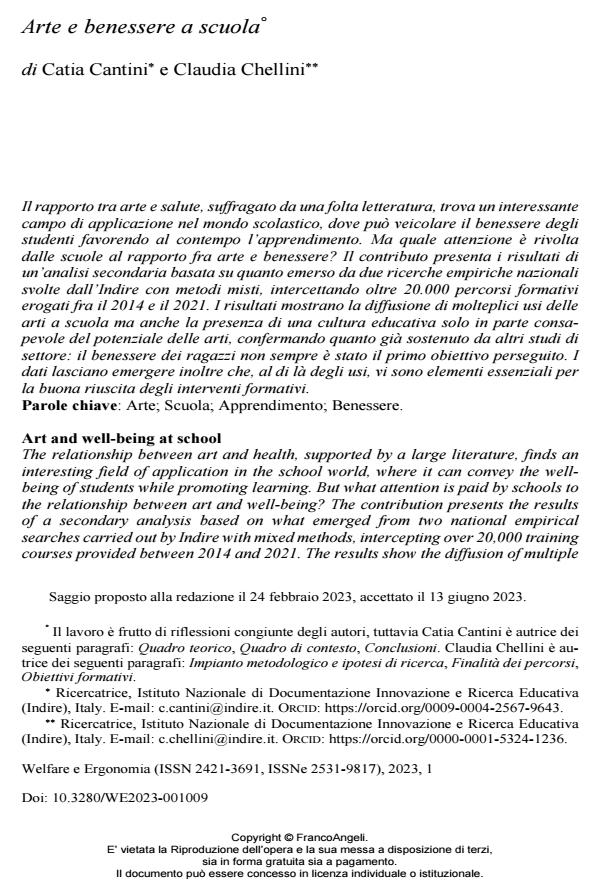Art and well-being at school
Journal title WELFARE E ERGONOMIA
Author/s Catia Cantini, Claudia Chellini
Publishing Year 2023 Issue 2023/1
Language Italian Pages 11 P. 109-119 File size 242 KB
DOI 10.3280/WE2023-001009
DOI is like a bar code for intellectual property: to have more infomation
click here
Below, you can see the article first page
If you want to buy this article in PDF format, you can do it, following the instructions to buy download credits

FrancoAngeli is member of Publishers International Linking Association, Inc (PILA), a not-for-profit association which run the CrossRef service enabling links to and from online scholarly content.
The relationship between art and health, supported by a large literature, finds an interesting field of application in the school world, where it can convey the well-being of students while promoting learning. But what attention is paid by schools to the relationship between art and well-being? The contribution presents the results of a secondary analysis based on what emerged from two national empirical searches carried out by Indire with mixed methods, intercepting over 20,000 training courses provided between 2014 and 2021. The results show the diffusion of multiple uses of the arts at school but also the presence of an educational culture that is only partially aware of the potential of the arts, confirming what has already been claimed by other studies in the sector: the well-being of children has not always been the first objective pursued. The data also reveal that, beyond the uses, there are essential elements for the success of the training interventions.
Keywords: Art; School; Learning; Well-being.
Catia Cantini, Claudia Chellini, Arte e benessere a scuola in "WELFARE E ERGONOMIA" 1/2023, pp 109-119, DOI: 10.3280/WE2023-001009